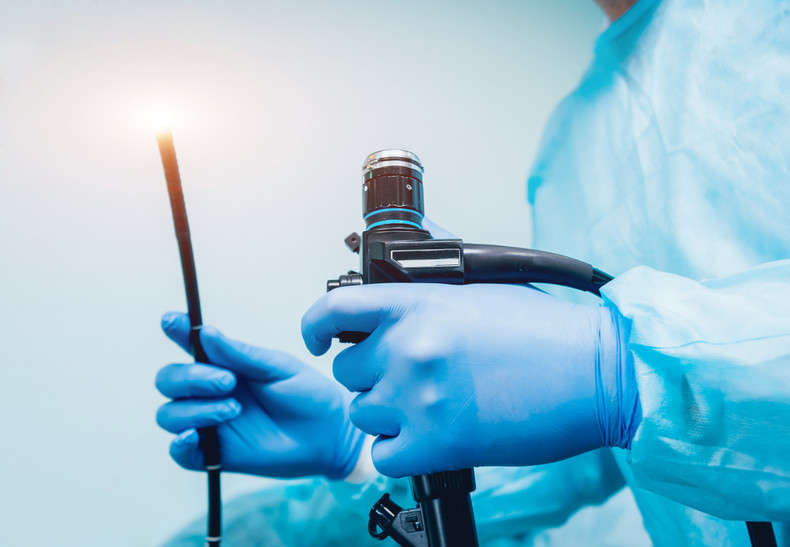
Many experts are involved in creating guidelines for The Association for the Advancement of Medical Instrumentation (AAMI). These experts in sterilization volunteer their time and energy to improve the standard of care for patients and clarify procedures for providers. Committees are made up of manufacturers, scientists, and health care practitioners in surgical services, endoscopy units, and sterile processing. Their range of expertise in practice and experience extends from large university health systems to small ambulatory surgery centers. Collectively, they come together to share their knowledge and standardize reprocessing to keep patients safe and reduce healthcare costs.
The committee of Working Group 84 (ST-WG84 – Endoscope reprocessing WG) spent seven years updating standard 91. In 2021, a new updated version of Standard 91 was released, and the detail provided in the new version continues to serve endoscopists in many different settings. AAMI states, “The document pays meticulous attention to all steps in the processing of flexible endoscopes and accessories is critical to ensure that they are rendered safe for subsequent patient use.”
The association is clearly passionate about the health of their patients and proud of the work they have done. Mary Ann Drosnock, director of Clinical Affairs at Healthmark Industries and a member of AAMI’s Endoscope Reprocessing Working Group (ST-WG 84) was interviewed about the project.
In the interview, she expressed excitement about the changes, stating, “We really beefed [the guidelines] up. We wanted to make sure that everybody's voices were heard and that all comments were discussed and resolved properly,” she also added, “There was no question afterward. This guidance is about patient safety, and we have the data baked in to support it.”
The guidance created by the AAMI covers each of the following endoscopes in healthcare facilities:
-
Flexible Gastrointestinal (GI) Endoscopes
-
Flexible Bronchoscopes
-
Flexible Ear, Nose, and Throat Endoscopes
-
Surgical Flexible Endoscopes (e.g., flexible ureteroscopes)
-
Semi-rigid Operative Endoscopes (e.g., choledochoscopes)
In short, “The updated standard provides new guidelines for precleaning, leak-testing, cleaning, packaging (where indicated), storage, high-level disinfection, and/or sterilizing.” Specifically, the classification for high-risk scopes, such as bronchoscopes and ureteroscopes. It provides updated guidance for drying, proper storage, and handling. In addition, the updated standard includes recommendations against manual disinfection and guidance for testing water in automated endoscope reprocessors (AERs). This will avoid the final-rinse water re-contaminating the scopes. Practitioners should be sure to read the guidance for determining the length of storage, or “hang time,” that a scope can withstand before needing to be reprocessed, as well as the drying guidelines.
In reviewing guidelines, it is important to understand the language used to describe the importance of different actions. The word must describe “unavoidable” situations, including those mandated by government regulation. The word shall require the SP to strictly follow the guidelines. The word should indicate that among several possibilities one is recommended as particularly suitable, that a certain course of action is preferred but not necessarily required. Using may indicate that a course of action is permissible within the limits of the recommended practice, while the word can is a statement of possibility and capability.
The increase of care in the updated standard involves Cleaning Verification Testing that states the following:
For High-Risk Scopes, they shall be monitored with cleaning verification after each cleaning.
For scopes that are not high-risk, the processor should verify using cleaning verification tests when new endoscopes are purchased and at established intervals (e.g., at a statistically significant frequency based on the number of procedures performed). *See Annex F, for statistical frequency determination. Consider other factors: endoscope type, technician competency…
Endoscopes should be inspected with each reprocessing cycle.
Lighted magnification should be used to inspect for debris and damage.
If a scope repeatedly fails cleaning verification, the technician considers inspection with a borescope before sending it for repair. Borescope Inspection can help the Endo/SP technician view the internal channels and can be used periodically at a frequency determined by the facility. Before using a borescope, the practitioner should make sure the endoscope is dry.
“Those endoscopes associated with infectious outbreaks that are difficult to process and have increased risk or those with complex design are described as, Duodenoscopes, linear ultrasound (EUS) endoscopes, bronchoscopes, endobronchial ultrasound (EBUS) endoscopes, ureteroscopes, cystoscopes and all those determined by the facility. Sterile Processing and Endoscopy departments may want to review the recent FDA publication Hospitals and Endoscopy Facilities: Important Recommendations for duodenoscopes.”
The FDA states that providers should “consider using duodenoscopes that have disposable components, if available at your facility; this design may lower but not eliminate the risk of infection. When using these components, carefully follow the manufacturer’s instructions for the assembly of the caps and distal ends.” Experts also direct the practitioner (Endoscopy and Sterile Processing departments) to “ensure staff is following all reprocessing instructions and to institute a quality control program that includes sampling and microbiological culturing, and other monitoring methods.” The detailed report can be found at https://www.fda.gov/medical-devices/safety-communications/fda-recommending-transition-duodenoscopes-innovative-designs-enhance-safety-fda-safety-communication
To find more information regarding best practices for our processing teams and our patients, consider joining the ANSI/AAMI committee. Your expertise as a technician/practitioner is invaluable to the collective village. To learn more, you can purchase ANSI/AAMI ST 91 2021 – Comprehensive guide to flexible and semi-rigid endoscope processing in health care facilities athttps://www.aami.org/st91.
References:
Hospitals and Endoscopy Facilities: Important Recommendations. (2022, April 14). Retrieved from https://www.fda.gov/medical-devices/safety-commun...
Drosnock, M. A. (2022, April). The New Aami ST91: An Updated Standard for Flexible Endoscope Processing. HSPA Annual Conference & Expo. San Antonio; Grand Hyatt River Walk .
ANSI/AAMI ST 91 2021 – Comprehensive guide to flexible and semi-rigid endoscope processing in health care facilities
https://www.fda.gov/medical-devices/safety-communications/use-duodenoscopes-innovative-designs-enhance-safety-fda-safety-communication

